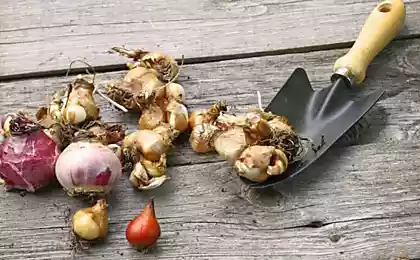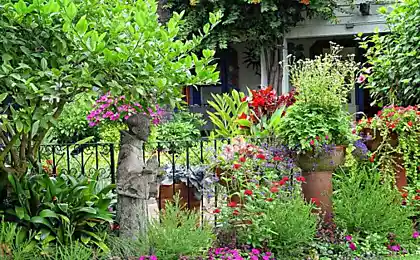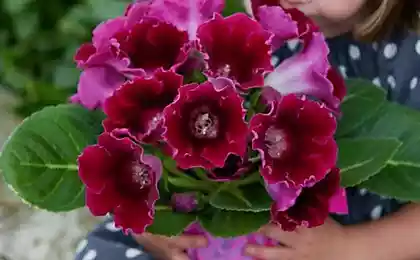209
After the flowering of the lily carefully separate tubers, the small bulbs will become new bushes by next year.
Admiring lilies, many flower growers think about what to multiply their favorite variety. There is no such thing as beauty. Let’s find out 5 effective ways, lilie.

Watch your favorite plant and choose the method that will be more effective for a particular variety. If in doubt, you can try everything and find the most convenient.
To do this, dig out the bush after flowering, carefully separate the daughter bulbs and immediately plant them on the prepared site. It is desirable to plant onions immediately after separation from the mother plant. The fact is that in the air they fade very quickly.

Lilies grown in this way begin to bloom. next year. However, some varieties form very few children. By the way, you can determine the number the next year after planting, when the young growth appears. It points to daughter bulbs.
In 2-3 years after planting, the bush becomes large enough and ready for separation. A plant with 2-3 flower stalks can be successfully propagated by division. For that, a lily excavate, carefully separate the bulbs and plant them in the prepared area.

Grown in this way, lilies begin to bloom. next year. A large lily bulb can divide, forming 2-3 full bulbs. After a couple of years, the nest becomes quite extensive, and it can be divided again. The method, in general, is universal. But it should be borne in mind that the active division of bulbs is not characteristic of all varieties.
Many species of lilies form daughter bulbs on scales. Asian hybrids reproduce in this way much better than Eastern ones. If you grow lilies this way, they will bloom. not earlier than in 3-5 years.

The advantage of this method is that from one bulb you can get a lot of planting material. The fact is that from 1 to 4 children are formed on one scale. Of course, before landing on a permanent place they will have to grow on a special bed or in containers.
There are varieties of lilies that form sinus. Once ripened, they are easily separated from the stem. When they fall to the ground, they take root. So bulbous lilies are capable of self-seeding.
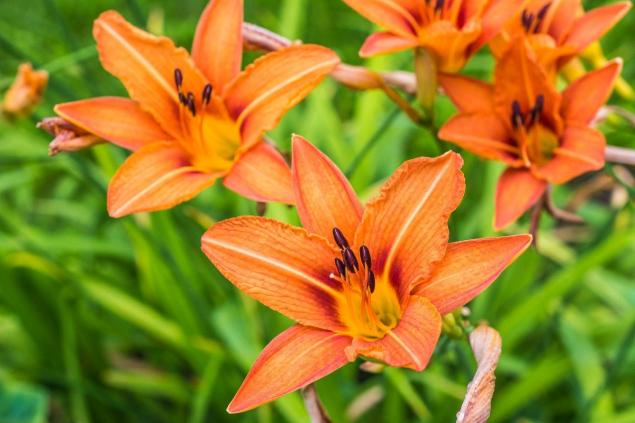
If you want to try this method, the collected buns should be sown immediately in open ground or in containers. Well-developed bulbs can be expected 2-3 years later.
Immediately we want to warn that this method is quite complex and suitable mainly for species lilies. When breeding seeds, not all varietal characteristics may be preserved. But the upside is that they rises very well.
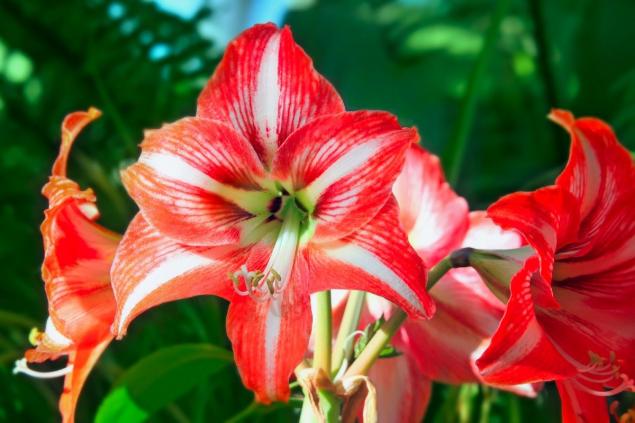
Seed collection should be carried out after the seed boxes become brown. Seeds should be sown in a moist peat substrate or vermiculite. Before germination, keep them in the refrigerator, and then plant them in pots. We are patient at this stage, because The result will have to wait at least 5 years.. Of course, this method is not very popular.
We also recommend reading the article on how to properly care for lilies so that they bloom and smell lush. Good luck!

Watch your favorite plant and choose the method that will be more effective for a particular variety. If in doubt, you can try everything and find the most convenient.
To do this, dig out the bush after flowering, carefully separate the daughter bulbs and immediately plant them on the prepared site. It is desirable to plant onions immediately after separation from the mother plant. The fact is that in the air they fade very quickly.

Lilies grown in this way begin to bloom. next year. However, some varieties form very few children. By the way, you can determine the number the next year after planting, when the young growth appears. It points to daughter bulbs.
In 2-3 years after planting, the bush becomes large enough and ready for separation. A plant with 2-3 flower stalks can be successfully propagated by division. For that, a lily excavate, carefully separate the bulbs and plant them in the prepared area.

Grown in this way, lilies begin to bloom. next year. A large lily bulb can divide, forming 2-3 full bulbs. After a couple of years, the nest becomes quite extensive, and it can be divided again. The method, in general, is universal. But it should be borne in mind that the active division of bulbs is not characteristic of all varieties.
Many species of lilies form daughter bulbs on scales. Asian hybrids reproduce in this way much better than Eastern ones. If you grow lilies this way, they will bloom. not earlier than in 3-5 years.

The advantage of this method is that from one bulb you can get a lot of planting material. The fact is that from 1 to 4 children are formed on one scale. Of course, before landing on a permanent place they will have to grow on a special bed or in containers.
There are varieties of lilies that form sinus. Once ripened, they are easily separated from the stem. When they fall to the ground, they take root. So bulbous lilies are capable of self-seeding.

If you want to try this method, the collected buns should be sown immediately in open ground or in containers. Well-developed bulbs can be expected 2-3 years later.
Immediately we want to warn that this method is quite complex and suitable mainly for species lilies. When breeding seeds, not all varietal characteristics may be preserved. But the upside is that they rises very well.

Seed collection should be carried out after the seed boxes become brown. Seeds should be sown in a moist peat substrate or vermiculite. Before germination, keep them in the refrigerator, and then plant them in pots. We are patient at this stage, because The result will have to wait at least 5 years.. Of course, this method is not very popular.
We also recommend reading the article on how to properly care for lilies so that they bloom and smell lush. Good luck!
What the cheerful and cheerful Yuri Nikulin tirelessly said
How the habit of covering the head changes a woman’s life

